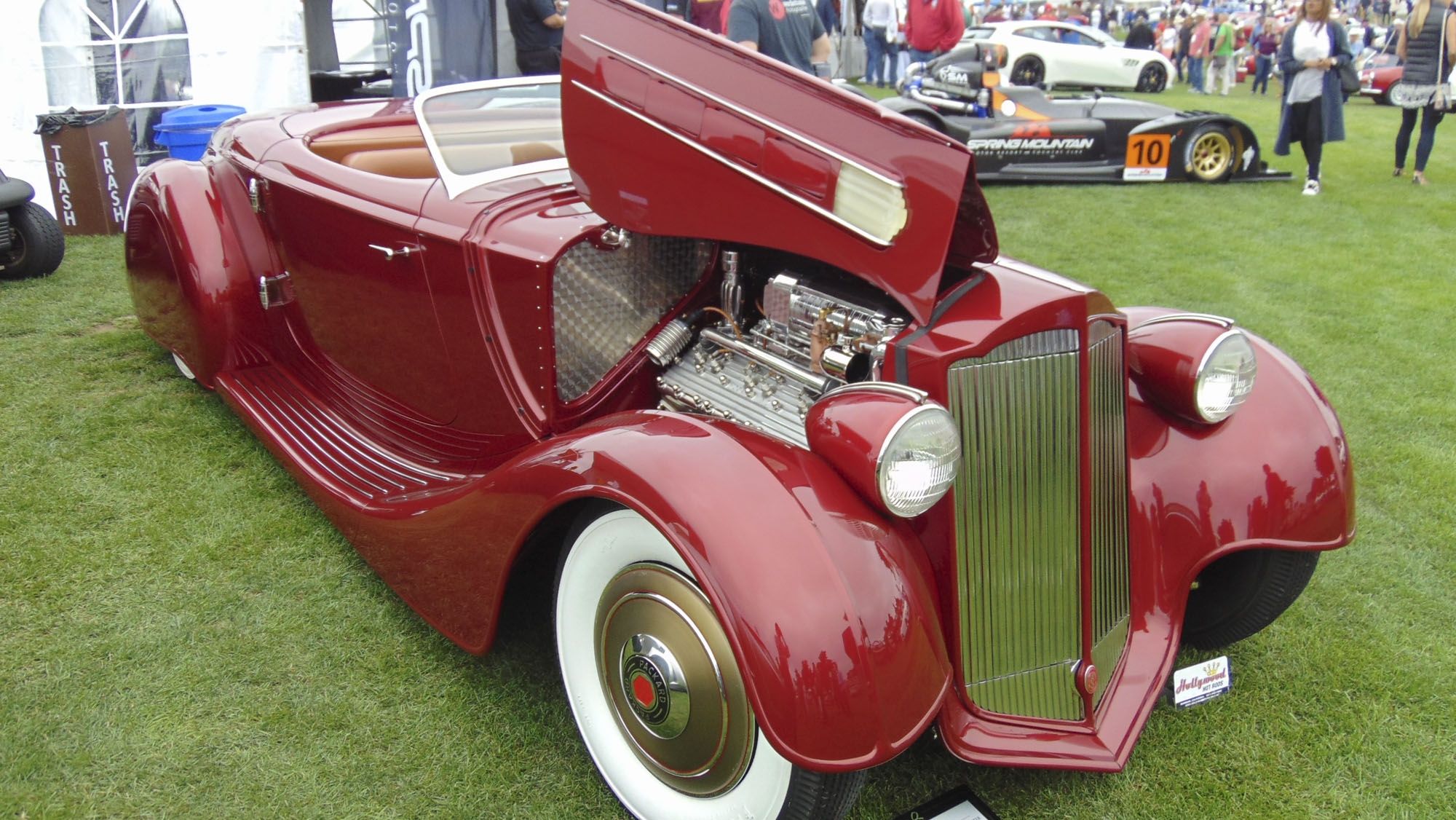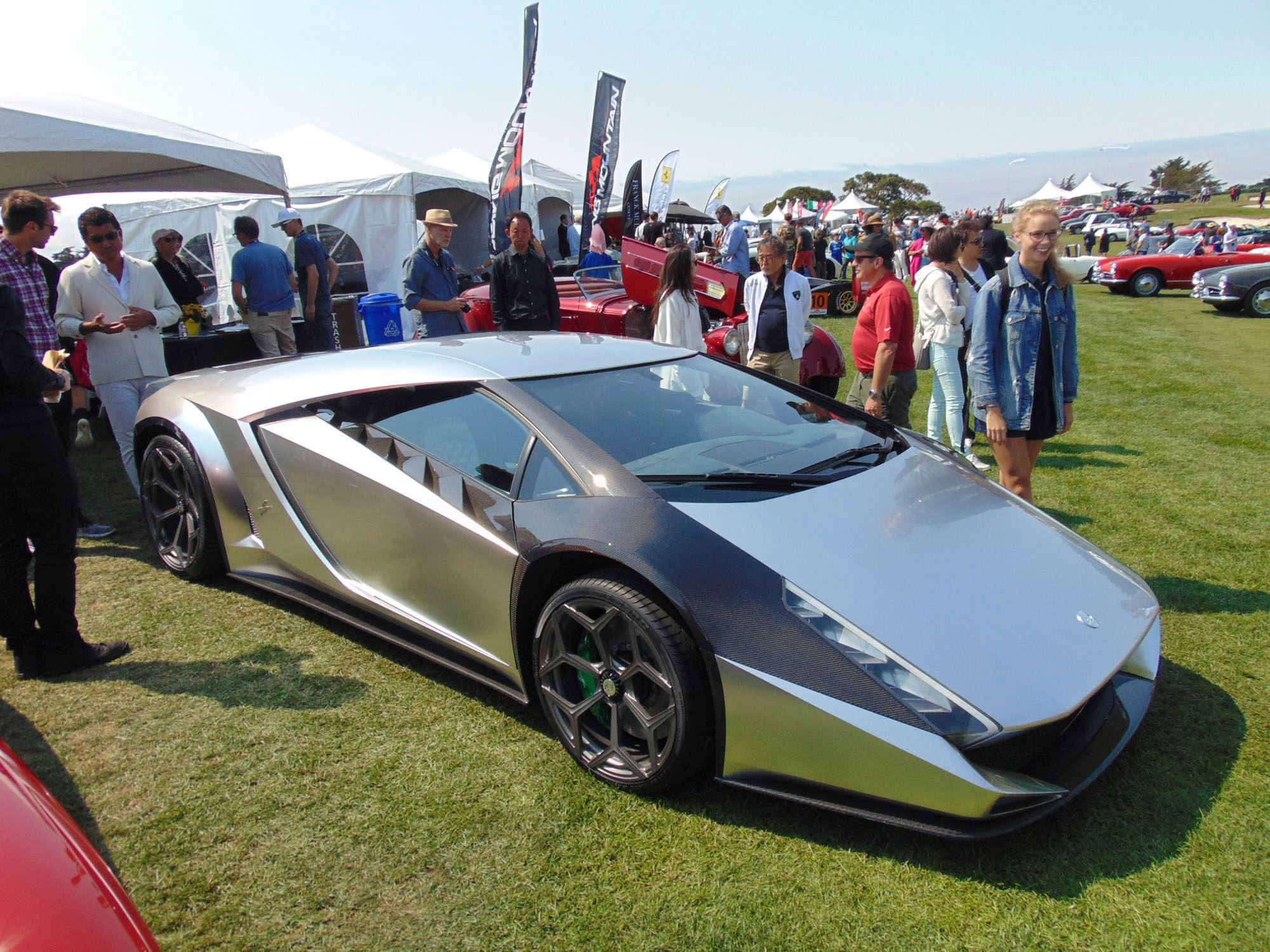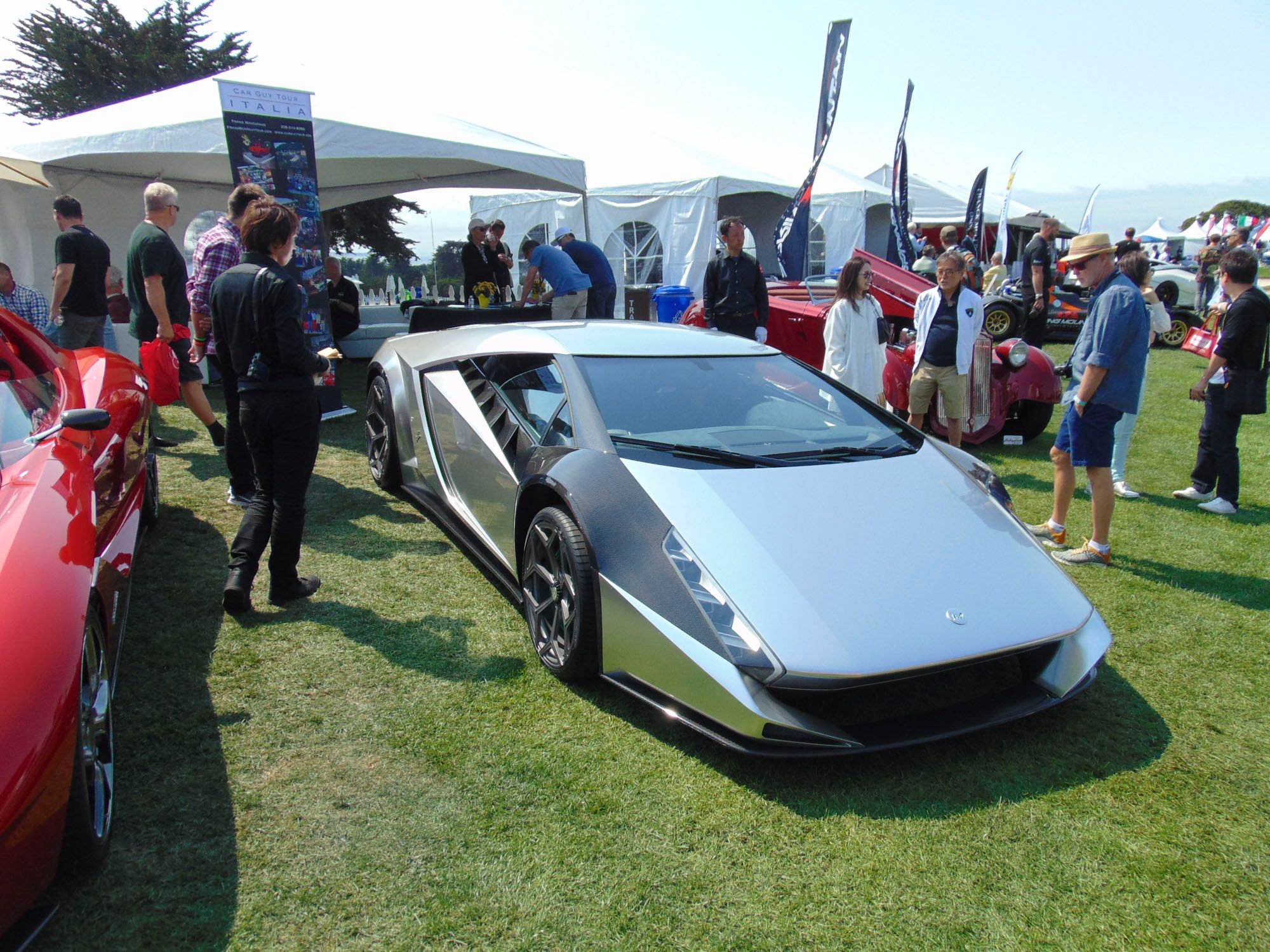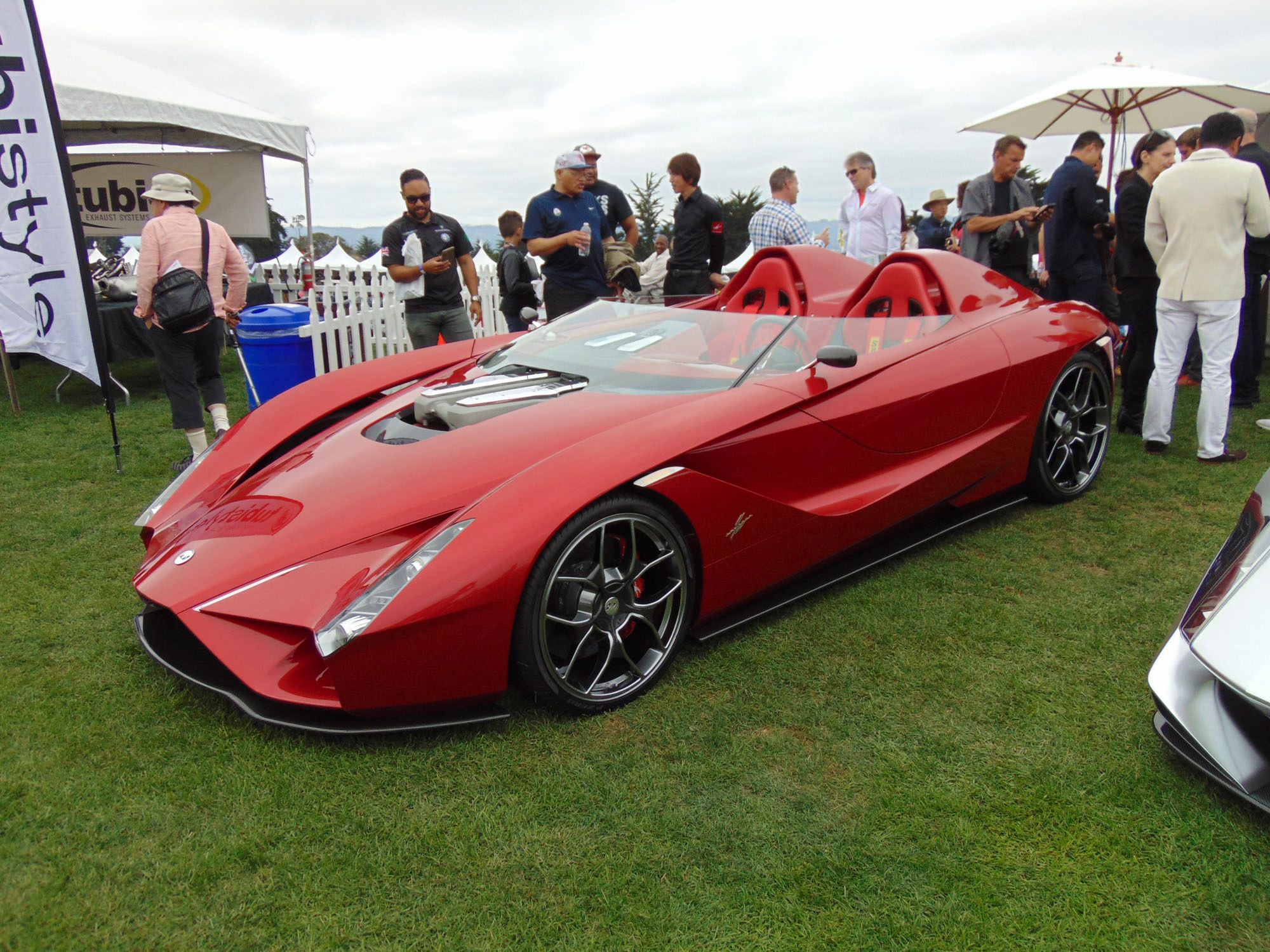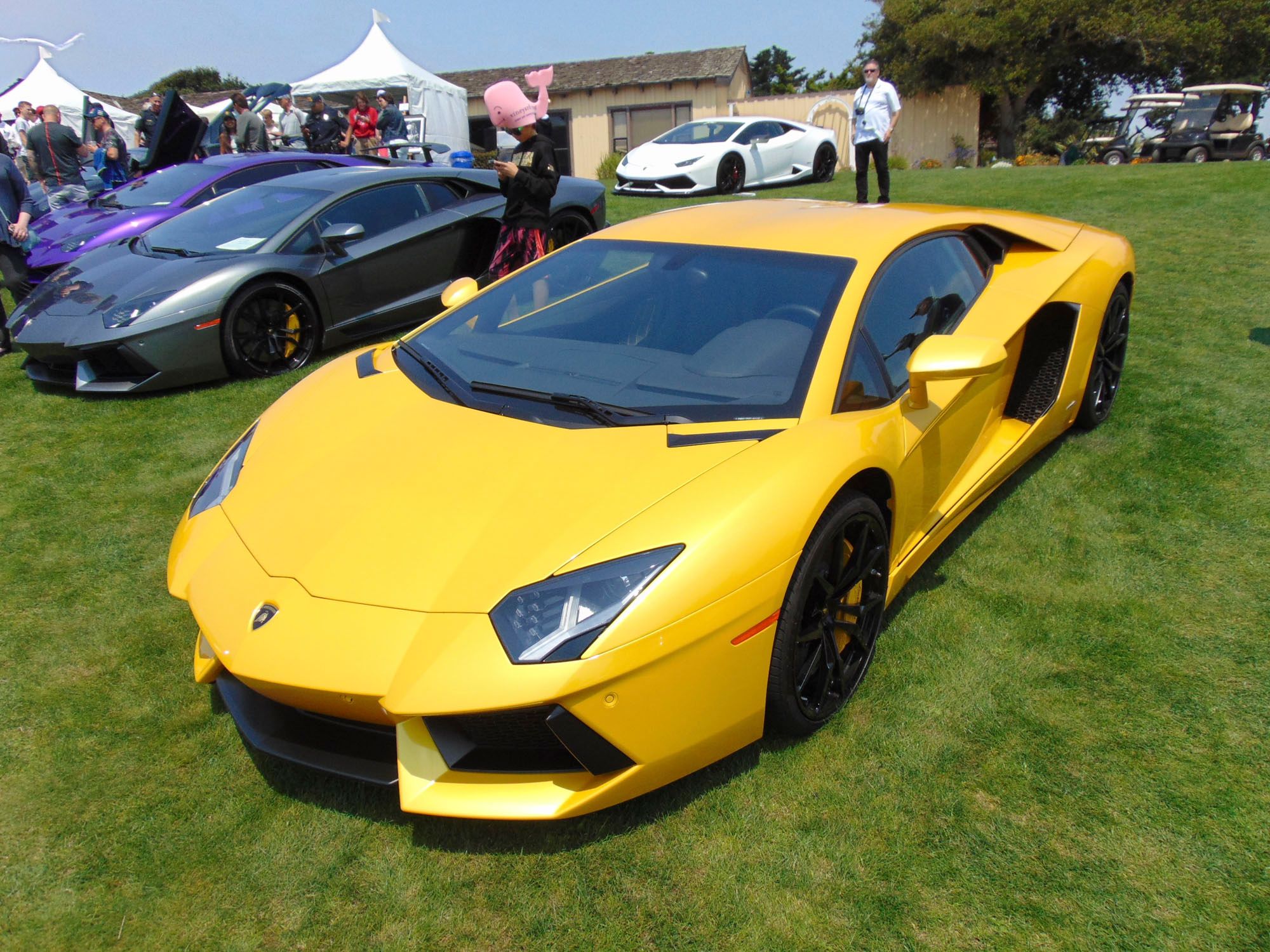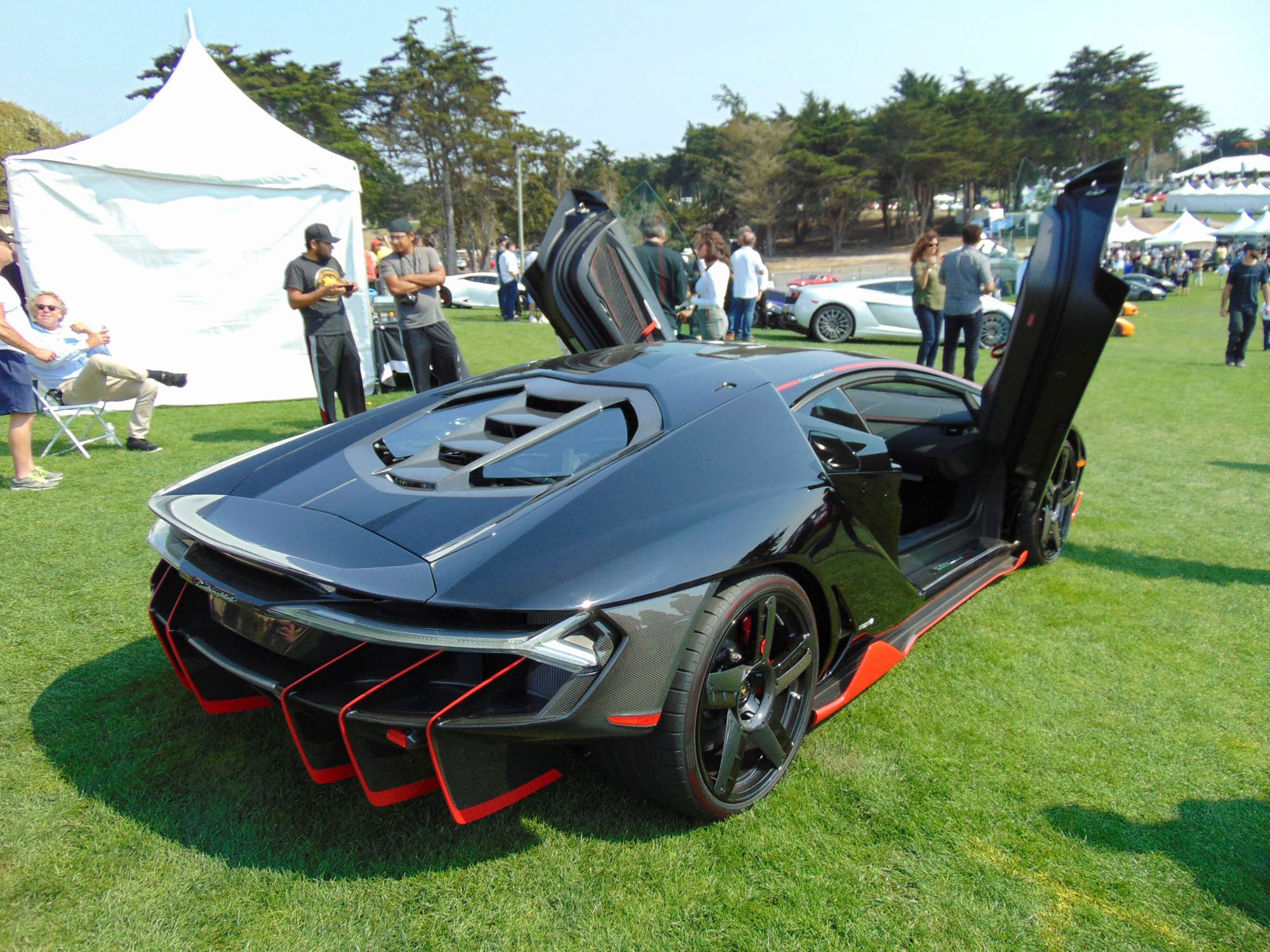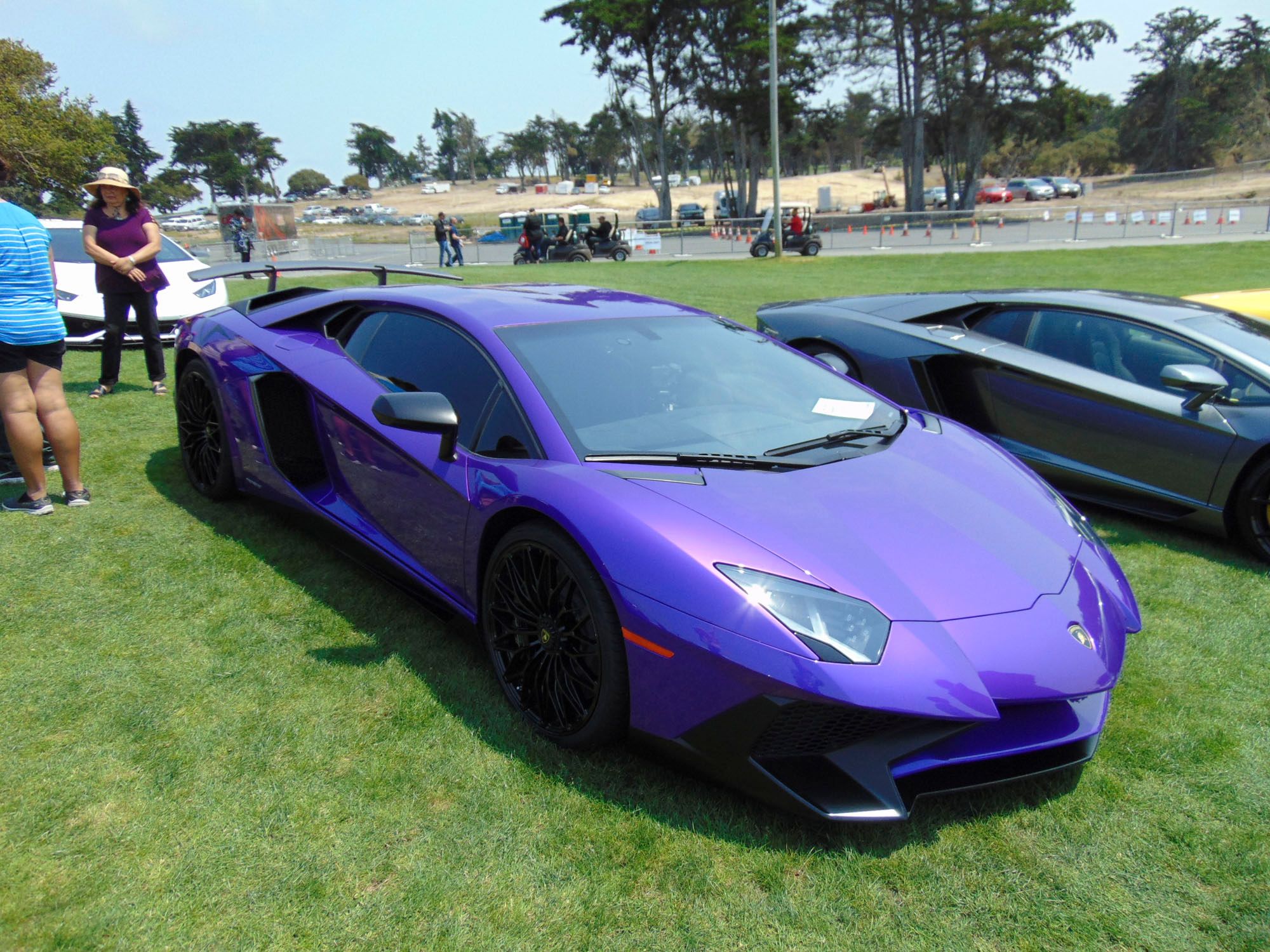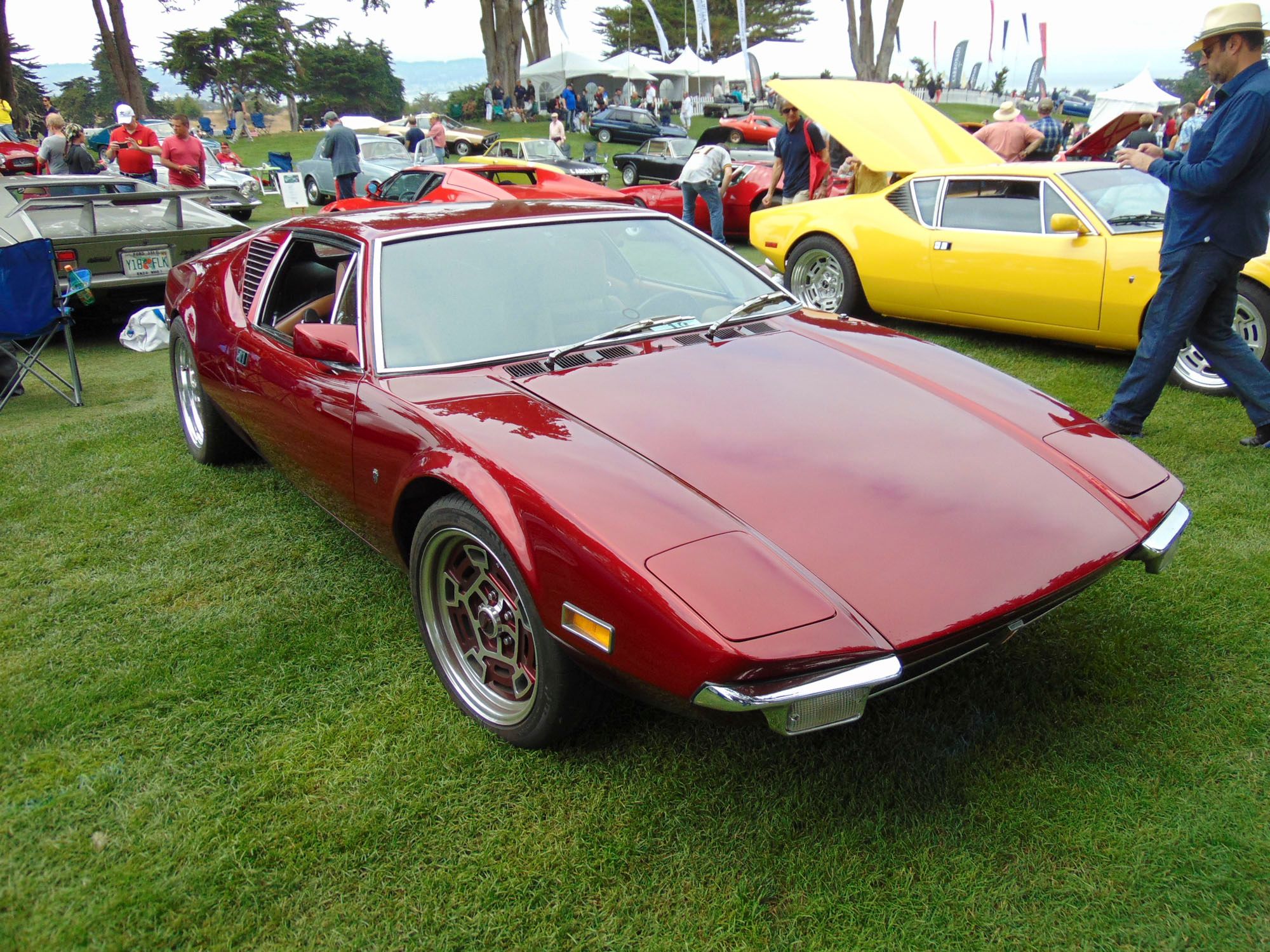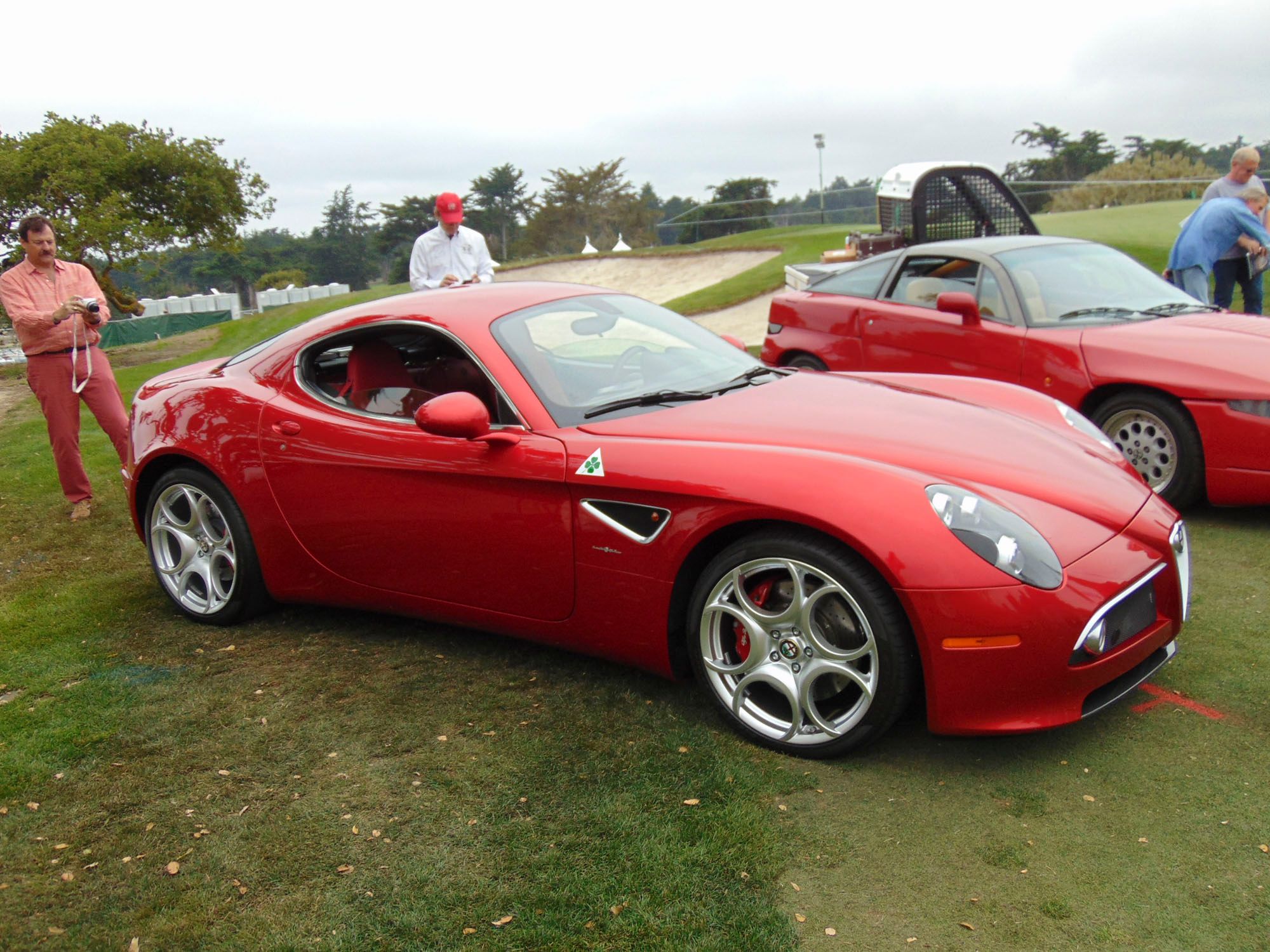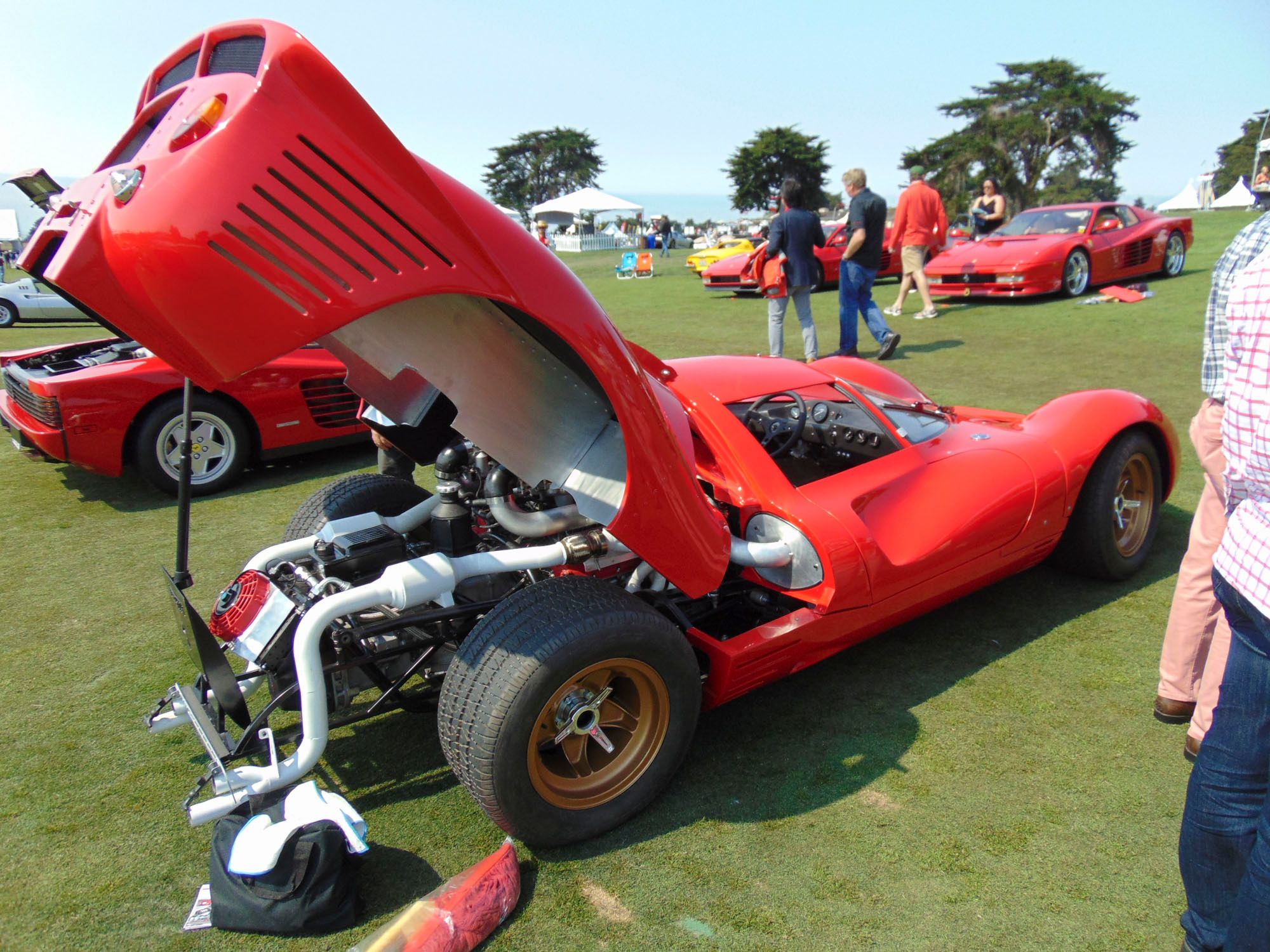As I approached the entrance gate at the 2017 Concorso Italiano, I thought how fortunate I was to find this annual event so near to home. I took a moment to reflect on its importance to me, and probably to mostly other attendees too. What does Concorso bring each and every year? Plenty! We all know it brings droves of Italian Automobiles. But Concorso brings automotive glamor too. Cars are immaculately prepared by their owners, and in arrive in show condition. There are so many of them, usually numbering around a thousand. There are some extremely rare cars in the mix. Concorso brings us the individual story of these rare cars, often told by the owners themselves as the cars traverse and pause on the automotive stage during the day, while the owners relate their background.
Let's see how the day went...
There is glamor and aesthetics in these beautiful automobiles. Concorso says there are all things Italian at the show. Motorcycles, boats, fashion, food, and art grace the fairways along with the cars. Lo stile di vita Italiano!
I made the Kode Zero one of my first targets of the day. The one-off was designed by Ken Okuyama, the lead designer of Ferrari’s supercar the Enzo when he was at Pininfarina. I found it quickly, and immediately had an affinity for it.
After receiving the prestigious Hall of Fame award “La Bella Macchina” at Concorso Italiano last year, Ken returned to Concorso this season bringing his one-off, the Kode Zero. Founder of Ken Okuyama Design, his Kode Zero utilizes a carbon fiber monocoque powered by a mid-mounted V12.
With those credentials, I was curious about his approach and methodology when creating new designs. Ken was standing next to his car available for the moment, so I asked him, “When you are making a new design, do you use a particular process, for example, aesthetic principals that architects might use, or do you think about certain geometric shapes, or does the computer assist you?”
“None of these,” Ken replied. “The guidelines that I use are three - simplicity, modern, and timeless. Then my arm simply goes into motion creating the lines for the design.”
I answered, “Oh, I think I know what you mean. It’s a bit like when I am preparing a meal in the kitchen, and using the recipe book is taking too much time. My subconscious takes over and I just do it?”
He agreed, laughing, “Yes, yes, that’s it! Just get the thinking out of it!”
Later, on stage he described the “timeless” aspect of what he strives for as “potent”, meaning that the design should last for a very long time. Ken’s Kode Zero, by the way, is a real knock-out!
Ken also brought along another one of his designs, the Kode 57 Enji. The roadster shows off some less conventional styling, like the top of the engine through and slightly above the bonnet, and gaps between the front fenders and the bonnet exposing some suspension. Power is by a 6-liter V12 exceeding 600 hp, and this car is buyable now.
Lamborghini was nearby, with owner’s cars located across a long, rolling slope of the fairways. So I set off for them, always one of my favorite stops. The layout helped show off their exotic lines, their always exciting bright pastel colors, usually in metallic paint, and their vertically opening doors flung high in the air. It has been 50 years since Lamborghini first introduced vertically opening doors on the Marzal prototype. Looking through several adjacent Lamborghinis with their doors open high gave perspective, and I thought of giant bird’s wings flapping. There was a large flock of Lamborghinis on display including a 2016 Aventador Centenario, with 6.5-liter mid-engine V12, and all-wheel-drive. Only 20 coupes and 20 roadsters were produced.
A new recognition, the Valentino Balboni Award, was introduced and presented on stage by Balboni, the former long-time Lamborghini factory test car driver. After presenting the award on stage, Balboni told about the time Mike Wallace, of the 60 Minutes TV show fame, came to evaluate Lamborghini in 1987. Balboni took Wallace for a ride, needless to say at highly advanced speeds.
A couple days after the test ride, it was time for Wallace to leave Italy, and Balboni drove Wallace to the airport. Exiting the car, Wallace exclaimed, “This is the happiest day of my life!!” Balboni, “Oh yes? Why is that?” Wallace, “Because I’m getting out of Italy, ALIVE!!!”
A friend of mine in the DeTomaso Pantera car club had told me about his ride with Balboni at an event featuring the opportunity in some sort of charity situation. He explained that Balboni put that Lamborghini through some pretty uncommon maneuvers at great speed. So I can well understand about white-knuckles, pale face, and all that.
I have no doubts about Balboni’s prowess with supercars. We seem to cross paths every year or so. A few seasons back at an automotive event I asked Balboni a question about using the brakes when entering corners at high speed. To my amazement, he expanded my question into other areas of a car, and described the total experience of high speed braking, touching on factors that I had not even considered. I think that when it comes to supercars, he has been there – done that, many, many times. The man is quite the resource.
Tom Tjaarda passed in June. Commentary said that he would always be with us at Concorso. A member of the Concorso Italiano Hall of Fame, Tjaarda had designed the DeTomaso Pantera (1971-1992), and worked at Pininfarina where he designed two production Ferraris, the 330GT and the 365 California Spyder, as well as the Fiat 124. Tjaarda earned a degree in architecture at the University of Michigan, but spent fifty years designing cars, mostly in Italy. The Pantera is a bit of a cult car and has quite aggressive looks. Enthusiasts love to modify it, and often do great work in so doing, such as adding 500 cu. in.- plus engines. As usual, there quite a large turnout of sexy Panteras at Concorso.
Not all cars at Concorso are Italian, and one such was the Mulholland Speedster. A large, multiple award-winning roadster, owned by Bruce Wanta of Bellevue Washington, the build by Troy Ladd’s Hollywood Hot Rods exceeded six years. Starting point was a 1936 Packard. 0926
One of Alpha Romeo’s most eye-catching entries at the show was a 2008 Alpha Romeo 8C Competizione (2008-2010). Only 500 units produced, with 90 to the USA, the model is based on the Maserati Quattroporte platform with a carbon-fiber body. The car was assembled at Ferrari, and is powered by a 450 hp Ferrari 4.7-liter V8, with a sequential 6-speed F1-type transmission.
Of course, Ferrari had a large presence at Concorso including two models less often seen. The first was the 288 GTO, a rear-mid-engine, twin-turbo, 2.8-liter V8 (1984-1987), only 272 produced. The other, an F40 (1987-1992), a mid-engine, twin turbo, 2.9-liter V8, 1,311 produced. Ferrari’s latest was on display too, the 488 GTB (Gran Turismo Berlinetta), and a blue 488 Spider (2015 – present). The new model is a twin-turbocharged evolution of the 458 Italia. Also on the lawn was the LaFerrari hybrid (2013 – present).
After all is said and done, one question begs. How little remaining space does even a golf course have after the Concorso Italiano rolls in?

